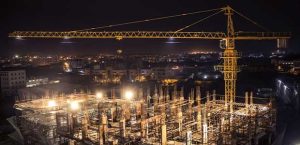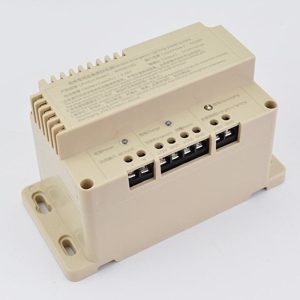Exploring emergency lighting regulations in Spanish building sites.It requires careful attention to detail and following rules closely. Spanish construction sites are places where buildings, roads and other structures are built in Spain. These sites are where workers use tools and materials to construct things like houses, offices and bridges.
Spanish building sites require severe loyalty to emergency lighting regulations to guarantee laborer security and reduce anticipated dangers. These guidelines are revered in legitimate structures like the Technical Building Code (CTE), the Regulation of Thermal Installations in Buildings (RITE) and Workplace Health and Safety Regulations.
Project administrators and site bosses should direct exhaustive evaluations of authoritative archives and team up with affirmed lighting experts to guarantee consistency. Constant support and testing are likewise pivotal to keep up with the respectability and usefulness of crisis lighting frameworks.
The construction business in Spain is forcefully controlled to guarantee security and prosperity of workers. The presence of sufficient crisis lighting frameworks is significant because of the great action and potential risks present on building locales.
These guidelines guide development projects through likely risks and guarantee quick reaction in the midst of emergency. This blog investigates the complications of crisis lighting guidelines in Spain, highlighting the significance of adherence to somewhere safe and secure principles.
Understanding Spanish guidelines encompassing crisis lighting is essential for guaranteeing consistency and advancing wellbeing on building locales. In Spain, as in numerous different nations, these guidelines are complete and cover different parts of crisis lighting frameworks to successfully relieve gambles.
The Technical Building Code(CTE) fills in as an essential authoritative record overseeing development principles in Spain. Inside the CTE, explicit prerequisites with respect to crisis lighting are illustrated to guarantee the wellbeing of tenants in structures, including building destinations.

Also, the Regulation of Thermal Installations in Buildings(RITE) gives further direction on specialized angles connected with crisis lighting frameworks, for example, power sources and energy effectiveness.
Moreover, Spanish working environment wellbeing and security guidelines assume an urgent part in setting principles for crisis readiness. These guidelines command that building destinations should have satisfactory crisis lighting to work with quick departure during unanticipated conditions, like fires or blackouts.
Key parts tended to in Spanish guidelines incorporate enlightenment levels, reinforcement power term, luminaire position, and upkeep conventions. These guidelines specify least enlightenment levels for various regions inside building destinations, guaranteeing perceivability along get away from courses, flights of stairs, and crisis exits.
Emergency lighting systems should have reinforced power sources for a predetermined duration, ensuring visibility even during blackouts and allowing tenants to safely evacuate.
Spanish guidelines emphasize the importance of proper luminaire placement for uniform light and safety, ensuring they are strategically placed away from pathways, exits, gathering areas, and high-risk areas.
Spanish guidelines mandate regular assessments, testing, and maintenance of crisis lighting systems to ensure their functionality and address any shortcomings, thereby improving overall security measures on building sites.
Spanish guidelines on crisis lighting are crucial for ensuring consistency and security in building destinations, enabling development partners to effectively manage threats and protect workers and residents.
Key components of emergency frameworks assume a basic part in guaranteeing the security and prosperity of people in different settings, including building destinations. Understanding these parts is fundamental for planning, introducing and keeping up with successful crisis lighting frameworks. Exhaustively, the key parts include:

Understanding the critical parts of emergency lighting systems is vital for planning, introducing, and keeping up with powerful security estimates in building locales and different offices. By guaranteeing the legitimate choice, establishment and support of these parties, partners can upgrade the security and prosperity of people and limit gambling during crises.
Assuring that rules are followed is pivotal for keeping up with security and administrative consistency in building sites. Here is a detailed look at how to guarantee adherence to standards:
Start by completely understanding the significant guidelines and principles relevant to building destinations. This incorporates finding out more about neighborhood construction laws, security guidelines and industry norms. Routinely survey these guidelines to keep awake to-date with any progressions or updates.
Norms ought to be incorporated into the preparation and configuration period of development projects. Guarantee that compositional plans, designing plans and development records line up with appropriate principles and guidelines. Think about variables like underlying trustworthiness, fire wellbeing, openness and ecological effect.
Carry out strong quality affirmation and control estimates all through the development interaction. This incorporates directing examinations, tests and reviews to confirm consistent principles. Distinguish and correct any deviations or resistance immediately to keep up with adherence to guidelines.
Utilize confirmed materials, items and hardware that fulfill industry guidelines and administrative necessities. Confirm the certificate and consistency of development materials, electrical parts, apparatus and wellbeing gear before use nearby. Unacceptable or rebellious materials can think twice about quality.
Give far reaching preparing and training to development staff on principles, methodology and best practices. Guarantee that specialists comprehend their jobs and obligations in keeping up with adherence to norms. Offer specific preparation on wellbeing conventions, hardware activity and crisis techniques to actually alleviate chances.
Cultivate cooperation and open correspondence among project partners, including planners, engineers, workers for hire, subcontractors and administrative specialists. Lay out clear channels of correspondence to address concerns, resolve issues and offer data connected with guidelines and consistency necessities.
Keep up with definite documentation and records of movements of every kind connected with guidelines consistency. Track assessments, tests, confirmations, licenses and approvals acquired all through the development cycle. Documentation fills in as proof of adherence to guidelines and gives a significant reference to future undertakings.
Take a step at constant improvement by consistently assessing and refining cycles, methods and practices connected with principles consistency. Request input from partners, investigate execution information and carry out remedial activities to address lacks and improve consistency endeavors.
By following these steps and focusing on adherence to guidelines, building sites can limit risks, guarantee security, and maintain administrative consistency all through the project lifecycle.
In conclusion, Spanish building sites should comply with emergency lighting guidelines, including the Technical Building Code and working environment wellbeing and security principles, to guarantee security and limit risks. Consistence with these guidelines isn’t simply a legitimate commitment yet additionally an ethical objective, focusing on security and encouraging a culture of responsibility. As development projects advance, embracing these guidelines guarantees more secure and safer worksites for people in the future.
The primary regulations governing emergency lighting systems on Spanish construction sites include the Technical Building Code (CTE), the Regulation of Thermal Installations in Buildings (RITE) and workplace health and safety regulations.
Spanish regulations stipulate requirements regarding illumination levels, backup power duration, luminaire placement, and maintenance protocols for emergency lighting systems.
To ensure compliance with Spanish emergency lighting regulations, it’s essential to conduct a comprehensive compliance assessment, employ qualified professionals for installation, conduct regular maintenance and testing, maintain thorough documentation, and stay informed about updates to regulations.
Common types of emergency lighting fixtures used on Spanish construction sites include exit signs with illuminated letters, emergency luminaires with incandescent bulbs, fluorescent tubes, or LED lights, and backup power sources such as rechargeable batteries or generators.
Yes, Spanish regulations require emergency lighting fixtures to be strategically placed along escape routes, exits, staircases, assembly points, and high-risk zones to ensure adequate illumination and guide occupants to safety effectively.
Not sure what you required for your lightining project ?
Get in touch with us for FREE consultation.